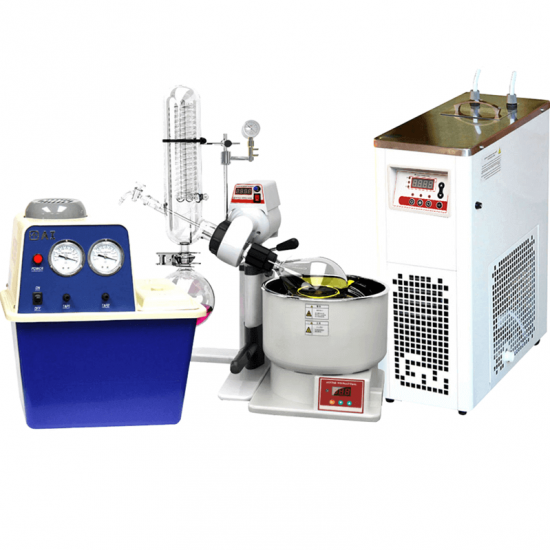Lith Corporation, founded in 1998 by a group of material science doctor from Tsinghua University, has now become the leading manufacturer of battery lab&production equipment. Lith Corporation have production factories in shenzhen and xiamen of China.This allows for the possibility of providing high quality and low-cost precision machines for lab&production equipment,including: roller press, film coater,mixer, high-temperature furnace, glove box,and complete set of equipment for research of rechargeable battery materials. Simple to operate, low cost and commitment to our customers is our priority.
A Battery Altitude Simulation Chamber, also known as a hypobaric chamber when focusing on reduced pressure conditions, is specialized equipment designed to evaluate how batteries perform under different atmospheric pressures, simulating various altitudes. This testing is essential for ensuring that batteries used in consumer electronics, electric vehicles (EVs), aerospace applications, and energy storage systems can function reliably in diverse environmental conditions, including highaltitude environments where the air pressure is significantly lower than at sea level.
Key Features
1. Pressure Control
These chambers can simulate a wide range of atmospheric pressures, typically from low vacuum levels (equivalent to altitudes above 30,000 feet) down to pressures higher than sea level. This allows for testing the performance and safety of batteries in both highaltitude and pressurized environments.
2. Temperature and Humidity Control
Advanced models also offer temperature and humidity control, enabling multifactor tests that consider the combined effects of altitude, temperature, and moisture on battery performance. This is particularly important since these factors are interrelated and can significantly affect battery chemistry and safety.
3. Safety Features
Given the potential hazards associated with battery testing under extreme conditions, these chambers are equipped with robust safety features. These include reinforced walls, automatic fire suppression systems, exhaust systems for fume extraction, and emergency stop buttons.
4. Data Acquisition System
Equipped with sophisticated data acquisition systems to monitor and record key parameters during testing, such as voltage, current, internal resistance, temperature, and pressure changes within the battery. This data is crucial for analyzing battery performance and safety under varying atmospheric conditions.
5. Customizable Test Protocols
Users can customize test protocols based on specific standards or requirements. For example, standards like UN/DOT 38.3 focus on transportation safety, while others like IEC 62133 provide guidelines for conducting abuse tests on portable sealed secondary cells.
6. Versatile Fixtures
Designed with adjustable fixtures to securely hold batteries of various sizes and shapes during the test. Proper securing ensures accurate and repeatable testing conditions, which is vital for obtaining reliable results.
Rotary Evaporator
Applications
Consumer Electronics: Ensures devices like smartphones, laptops, and wearables can operate reliably at different altitudes.
Electric Vehicles (EVs): Critical for assessing the performance of EV battery packs in mountainous regions or highaltitude areas.
Aerospace: Verifies the reliability and safety of batteries used in aircraft and spacecraft, which must operate effectively in extremely lowpressure environments.
Energy Storage Systems: Assesses the stability of largescale battery systems used in renewable energy installations located in highaltitude regions.
Regulatory Compliance: Helps manufacturers comply with international safety standards and regulations governing battery safety, such as UN/DOT 38.3, IEC 62133, UL 1642, and others.
Considerations When Choosing a Battery Altitude Simulation Chamber
Test Requirements: Ensure the chamber meets your specific needs regarding pressure range, temperature and humidity control, and required data recording capabilities.
Battery Size and Type: Select a chamber capable of accommodating the size and chemistry of batteries you intend to test.
Budget Constraints: Costs vary based on capacity, features, and brand. Prioritize necessary features over optional ones to stay within budget.
Ease of Use: Look for userfriendly interfaces and straightforward maintenance procedures to minimize downtime and training.
Maintenance and Support: Check the availability of spare parts, customer support, and maintenance services from the manufacturer.
Compliance Standards: Verify that the chamber complies with relevant industry standards required for your application, ensuring regulatory compliance.
By carefully considering these factors, you can select a Battery Altitude Simulation Chamber that not only fits your current testing needs but also supports future growth and compliance requirements. Ensuring the reliability of batteries under varied atmospheric conditions is critical for enhancing product quality and safety across numerous industries.
Manufacturers specializing in material and product testing solutions often provide Battery Altitude Simulation Chambers as part of their offerings. Consulting directly with these manufacturers or suppliers can help find a solution tailored to specific testing requirements and ensure it meets all necessary safety and performance standards. Examples of such manufacturers could include companies known for their comprehensive range of testing equipment, such as ESPEC, Weiss Technik, and Thermo Fisher Scientific, among others.




 Online service
Online service
